Opening fishing in 2013
Wishing everyone and myself a year of rich and delicious catch.
So this is my first day out on the water in 2013. And it’s raining again. This is the story of this season.
But I was determined to make a pay-back today. My last 2 fishing excursions were not very productive. And I did so much reflective thinking over my errors. Now I was focused.
It was not only raining but also gusty. But today we were getting on the boat on the east coast, which is behind the island to the north wind. So off we go in a light shower.
For most of us it was the first ride on this boat, Ryusei-Maru.
The northern half of Okinawa Island is rural mountains, untouched nature. We had to drive longer to get to the boat than usual, but the boat reached the first point in 10 minutes right out of the port. And we will learn this ocean was richer than any of us expected.
And I was about to have one of the most fishing productive days in my life.
We started out in 60m deep.
My first fish was a Yellowtail Barracuda. I don’t have the photo as it was raining hard.
This is my second fish.
A red – orange cod with a beautiful tail.
Yellow-edged lyretail
Variola louti
The jig was Gawky. A long fall jerk. You can see the fish bit on the rear, which means the fish made the bite when the jig was falling.
Some fellow anglers got some small amberjacks.
Then the boat fell silent for a while. We are trying to attract some bottom fish with the long fall jerks but no fish followed. The captain decided to move out to 150m deep.
Then the show has started for me.
Amberjack
Seriola dumerili
Rector 210g – Notice the fish made the bite on the rear.
Dolphin Fish or Mahi Mahi
Coryphaena hippurus
With Rector 210g – It was hooked on the rear.
When I was dropping down the jig, it was letting out the line in a funny way. Then I knew someone took the jig and ran.
It is a female, judging by the round shape of the head. Males have a bigger square head. When catching this fish, it’s important to knock it dead before laying it down, otherwise the fish will go wild for a long time on the floor and it will make a big mess. And when you try to hold it down, the hooks hanging around its mouth can hurt you seriously. You have to be really careful catching this fish.
Highfin Amberjack
Seriola rivoliana
With Rector 210g. It was hooked on the rear.
Not to mention, I closed all my catches with “Ike-Jime” right when it’s caught to keep it fresh and delicious for days to come.
Mackerel Tuna
Euthynnus affinis
Rector 210g. On the front hook.
My favorite Suma Tuna! This fish always makes my day. The Tataki Sashimi is soooooo delicious.
It hit when we were all retrieving the jigs. It could have happen to anyone but it hit me. Lucky me!
Crimson Jobfish
Pristipomoides filamentosus
With Rector 210g. On the rear hook.
Highfin Amberjack
Seriola rivoliana
With Rector 210g. On the front hook.
Amberjack
Seriola dumerili
With Rector 210g. Hooked on the front.
I was on fire. The fish just kept contacting me.
And it came the pay-back time.
It was just about before 10 cranks from the bottom when I got another hit. I made the hooking swing twice and started pulling up. First it felt like an average size, but after couples of seconds the fish suddenly started darting and dragging out line. I knew I was about 10m from the bottom. Now 6, 5, 4… Counting the color marks on the line that’s being dragged out fast. I needed to stop it. Or free the line. I used my thumb to stop the reversing turn of the reel and prayed that it would stop the fish.
And it did.
A big sigh of relief. And I had pulled up 5m more before the fish started the second run. I tried to put the same amount of pressure on my thumbing as I remembered I did to stop the first run. The fish dragged out couples of meters but then it stopped.
OK, now loosen my drag and pull up very carefully as my knots can be damaged pretty good by now.
Got it!
A 8kg Highfin Amberjack.
PE2.0 and 40lb leader With Rector 210g.
This catch is a high prize for me. I felt like I have paid back.
This one too is hooked on the rear.
I don’t know why but big fish like this can start light on hooking, and then all of the sudden start running like a king after maybe 10 cranks of retrieve. Maybe a big fish needs some time to turn around and get in high gears?
The show still goes on for me.
Blue-lined large-eye bream
Gymnocranius grandoculis
Rector 210g. Hooked on the rear hook.
I’ve always wanted to catch this fish. I’ve heard so many anglers say it’s delicious and never had one myself.
I’ve never caught so many fish in 1 day. I couldn’t stop.
There was my very objective self in my mind that was trying to understand something.
There were 6 of us.
There were 2 other anglers catching many fish.
The other 3 were not having a good day.
I know they are all good anglers.
But the difference is so distinctive.
So what is the difference?
Is there so-called “hit pattern” each day?
Jigging experts say there’s a hit pattern everyday. The particular jig movements that fish bites on. And it changes everyday.
I’ve always believed that as that’s what it says in the textbook. So every time I go out, I always try to find that pattern. And I always keep looking for it until the end of the day. I’ve never had an experience to say, “I’ve got the pattern of the day!”
Today I tried to prove it to myself. I tried to stay with the same pattern that brought me the first fish at 150m deep.
I had the 3oz Highpitch Jerker with PE2.0, 40lb leader and 210g Rector. The jig, 210g, was between 7oz and 8oz. This rod is a stronger setting for the slow pitch jerk with this weight of the jig. The kicking action is bound to be strong in flicking the jig out.
Rector is a responsive jig with a unique falling patterns.
The action was 1 pitch 1 jerk with some changes of the pace, and I put in some moments of short falls occasionally. The jig must have been moving actively with long slides, and then short falling in a turning around action at the edge of the slides probably.
And this caught all the fish.
And 9 out of my 12 catches were hooked on the rear, which means the fish made bites on those short falling actions.
Now this must prove pretty much that that is the hit pattern of the day. So it seems.
But on the contrary, I had a hard time finding something in common with other anglers who caught a lot of fish today. They said they found no particular pattern, as they hit with the long-fall, the slow-pitch and the high-pitch.
But those who didn’t catch many fish agreed that they might have been doing too much small pitches like 1/2 and 1/4.
Hmmm… So that might be the difference? I don’t know. I’m not convinced yet. I’d like to focus on this again in my next excursion.
For technical information on Slow-Pitch Jigging, see the link.
Related Posts
10 Comments
Leave a Reply Cancel reply
Categories
- 1. SPJ (57)
- 1-1. Principles (9)
- 1-2. Techniques (11)
- 1-3. Setup (17)
- 1-4. FAQ (19)
- 1-5. Tackles (3)
- 1-6. Video Gallery (2)
- 2. Other Offshore Games (5)
- 3. Fishing Report (105)
- 3-1. Totos (25)
- 3-2. Readers (72)
- 4. Fish Cooking (19)
- 4-1. Iki-Jime (3)
- 4-2. The Art of Sashimi (5)
- 4-3. Recipe (7)
- 4-4. Seasoning (3)
- 5. Fishing Charter (6)
- Fish (12)


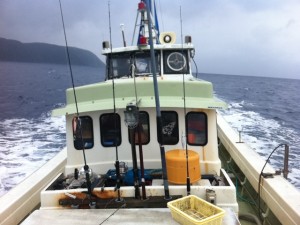
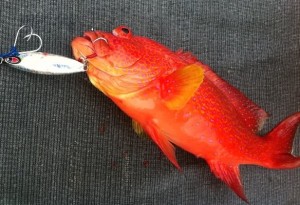
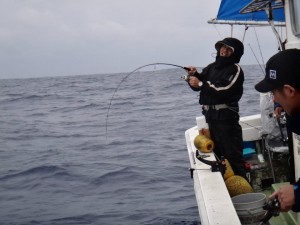

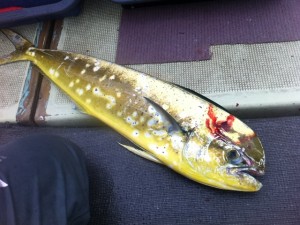







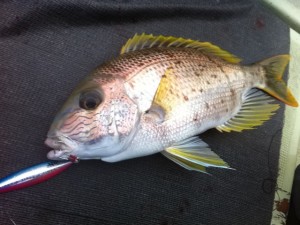



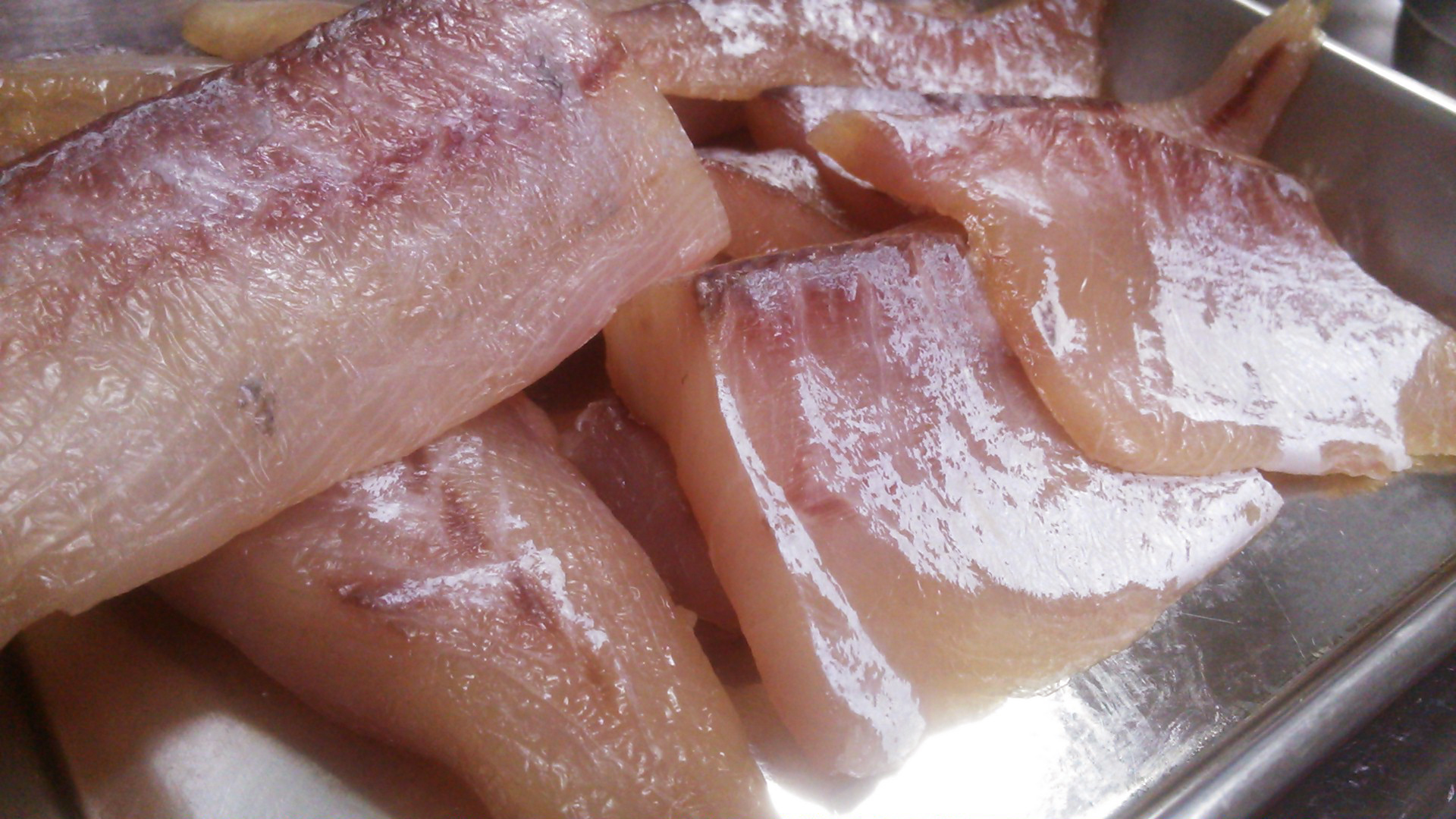
Hi Totos,
What a way to start a new year! Congratulation! Sometimes, thing like this happened to me too. It was last October fishing(jigging) trip around Similan Islands, I caught about one thirds of the whole boat (9 anglers) catches. Just could not describe the feeling, it’s your day!
Happy new year and best regards,
Kitidas P.
Hi Kitidas.
So your field is Thailand huh? I wasn’t really sure.
One third of the whole boat catch!!! That’s dominating. Wow.
Did you see anything you were doing different from others? I mean, what do you think made the difference?
We are always trying to find out what makes the difference so that we can be able to make differences consciously. It’s hard to figure it out when you’re not catching fish. But now that I had such a productive day, I still don’t know what made a difference for me.
Hi totos,
Yes, I’m Thai, and my fishing areas are the gulf of Thailand and Andaman sea(mostly Similan Islands and Burma lower coast).
I thought there were many factors contributed to the success of my October trip but could not pinpoint to which was the major one.
First, my tackles were lighter than others; I used 2 jigging sets: 1.custom pe1-3 rod(Major Craft Offblow Semi long 6’4″ blank) + Daiwa Ryoga Bay Jigging 2020H + Jerry Brown 20lbs braid + 30lbs. fluorocarbon shock leader, 2. Daiwa Hiramasa 60B rod + Daiwa Saltiga SA15 + Tuffline 30lbs. braid + 40lbs. fluorocarbon shock leader. While other anglers mostly used pe4-6 spinning systems with 50-70lbs. mono shock leader except one using a baitcaster system.
Second, my jigging pattern was letting the lure hit the bottom almost every time, doing the yo-yo and slow pitch about 5-10m. off the bottom then high pitch to the middle water column, and letting the lure down to bottom again. Using this pattern, I caught variaties of fish: Amberjack, Goldbanded jobfish, Rusty jobfish, Diamond trevally, Dogtooth tuna, Rainbow runner, Skipjack tuna, and Mackerel tuna.
Lastly, my jigging lures were a little bit heavier than others, but not by much (may be around 1-2 oz. more), which allowed me to hit the bottom faster. The lures used during the trip were similar to Duel Aile Metal jig, Shimano Butterfly jig, Yo-zuri Blanka, and a couple of others in 80-150 grams range.
It’s just like what you’ve described what happened on your trip, the fish just kept hitting you constantly while other anglers were having a so-so hit rate, and you could not tell exactly why it happened. 🙂
Kitidas P.
Thank you for your information Kitidas.
You are saying you don’t know what made the difference, but sounds like you have sorted it out. But your line system sounds most reasonable anyway.
And you are confirming 2 hit patterns I know at least!!!
– The first one to touch the bottom will get the fish.
– Being a different one while the other is doing the same thing will get the fish.
But wow… what great catches. All those kinds of fish, and near the bottom. If you were catching around a big bait ball in mid-water, all the fish must be activated and everyone can catch many fish. But you were not like that. Your jig must have something to switch on the fish and make them hit it. Great job!
Hi Totos,
Fantastic slow n fall results,,, what a nice way to start a new year 🙂
will you be visiting Osaka Tackle Show 2013?
Ed
Hi Ed.
Thank you for your comment. A good day can happen from time to time I suppose.
No, I’m not going to Osaka. Are you? If you are, send me your impressions on Catalina LD!
Hi Totos,
Great capture of some delicious species.
I noted you enjoy the mackerel tuna.
I have never tried it and at curtain times of the year they’re abundant in our Australian waters.
They are up to 10kg. Is there a preferred eating size? The flesh is very dark like steak.
Daz.
Hi Daz,
Oh, men. Mackerel Tuna, Euthynnus affinis, is the best of all tuna family.
http://anglers-secrets.com/v2020/euthynnus-affinis-87.html
To identify, they have black dots just under pectoral fin.
I’d say 4 – 5kg is best to eat.
They migrate toward the pole for the summer, and returning in the fall. We call the spring tuna, “First Tuna”. Fresh, light, elegant flavor. And the fall tuna “Returning Tuna”. Fatty, rich flavor.
Yes, the flesh is very dark. It’s fast to go rotten and smelly because it’s full of unsaturated fats. So rich in flavor. Proper closing, Ike-Jime, is strongly recommended. Take the gills and guts out as soon as you can, and store it on the ice, not in the iced water.
http://anglers-secrets.com/v2020/what-closing-does-to-the-fish-178.html
Slice it up right after you catch on the boat or at the dinner table the next day. Not in between. Not after.
It’s very common for Japanese to do Tataki with this fish. Lightly grill the surface of Saku, 1/4 fillet, in a flame, like a hand gas burner. And put it right in the iced water to prevent the heat to penetrate further. Wipe and slice to serve. Yummm…
Hi Totos
What an amazing days fishing you had, what I most like about this style of fishing is that we are always learning. Can’t imagine putting bait on big sinkers and dropping it to the bottom again. I love the challenge that jigging brings and find it very rewarding when it all goes good. Brilliant report with some awesome pictures.
Mark
Hi Mark.
Thank you for your comment. I agree that this is a constant process of learning. There are so much I’m learning and so much I still need to learn, sometimes I hesitate to write posts because I’m not so sure.
No one ever knows how jigs move at 100m down deep and how fish senses and acts. But there are anglers who always catch more than others. There are secrets that work and they don’t even know exactly how it works. That is why top anglers like that are always modest to say “It works probably because…” or “I’m not so sure but I think…” The bottom line is you never know. There’s no definite answers or absolute solutions. It really keeps capturing your imaginations.